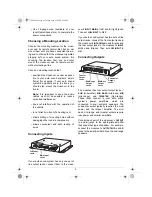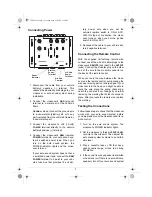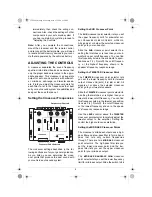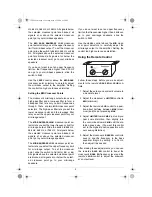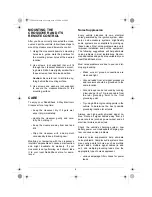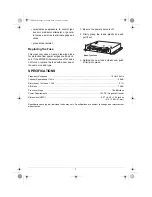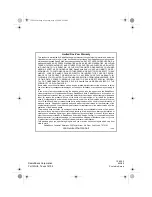
5
Hz,
80
Hz,
100
Hz, or
130
Hz. All signals below
the selected crossover point are blocked; all
signals at or above the selected crossover
point go to your mid-bass speakers.
The
MID BASS BANDPASS LOW
crossover
point selector lets you set the upper frequency
limit for mid-bass output. To set the crossover
point, slide the switch to
200
Hz,
300
Hz, or
500
Hz. All signals above the selected crossover
point are blocked; all signals at or below the
selected crossover point go to your mid-bass
speakers.
If you do not want to set an upper frequency
limit so that frequencies higher than 500 Hz
can go to your mid-bass speakers, slide the
switch to
FLAT
.
Use the
LEVEL
control above the
MID BASS
crossover point selectors to carefully adjust
the mid-bass output to the amplifier. Setting
the control too high could cause distortion.
Setting the MID Crossover Points
The crossover’s mid-range output also uses a
high-pass filter and a low-pass filter to form a
bandpass that lets only certain frequencies
through. There are two
MID
crossover point
selectors. The high-pass filter lets you set the
lower crossover point and the low-pass filter
lets you set the upper crossover point for your
mid-range output.
The
MID BANDPASS HIGH
crossover point se-
lector lets you set the lower frequency limit for
mid-range output. Slide the switch to
200
Hz,
300
Hz,
500
Hz, or
700
Hz. All signals below
the selected crossover point are blocked; all
signals at or above the selected crossover
point go to your mid-range speakers.
The
MID BANDPASS LOW
crossover point se-
lector lets you select the upper frequency limit
for mid-range output. To set the crossover
point, slide the switch to
1K
(kHz),
2K
, or
4K
.
All signals above the selected crossover point
are blocked; all signals at or below the select-
ed crossover point go to your mid-range
speakers.
If you do not want to set an upper frequency
limit so that frequencies higher than 4 kHz can
go to your mid-range speakers, slide the
switch to
FLAT
.
Use the
LEVEL
control above the
MID
cross-
over point selectors to carefully adjust the
mid-range output to the amplifier. Setting the
control too high could cause distortion.
Using the Remote Control
Follow these steps before you make adjust-
ments to the remote’s
BASS EQ
and
SUB
con-
trols.
1. Adjust the auto sound system’s volume to
a moderate level.
2. Adjust the crossover’s
LIMITER
control to
MIN
(minimum).
3. Adjust the remote’s
SUB
control to a posi-
tion about halfway between
MAX
(maxi-
mum) and the dot preceding
MAX
.
4. Adjust
LIMITER
toward
MAX
just until you
hear some distortion, then slightly turn
the control back toward
MIN
until the dis-
tortion goes away. (You want this control
set to the highest position possible with-
out causing distortion.)
5. Adjust the crossover’s
BASS EQ
control to
boost a specific frequency in the bass
equalizer. Begin by setting it to
70
Hz,
then adjust it as desired.
After making these adjustments, you can use
the remote’s
BASS EQ
control to boost the
crossover’s
BASS EQ
frequency level and the
remote’s
SUB
control to adjust the subwoof-
er’s output level.
12-2020.fm Page 5 Tuesday, May 23, 2000 6:56 PM


